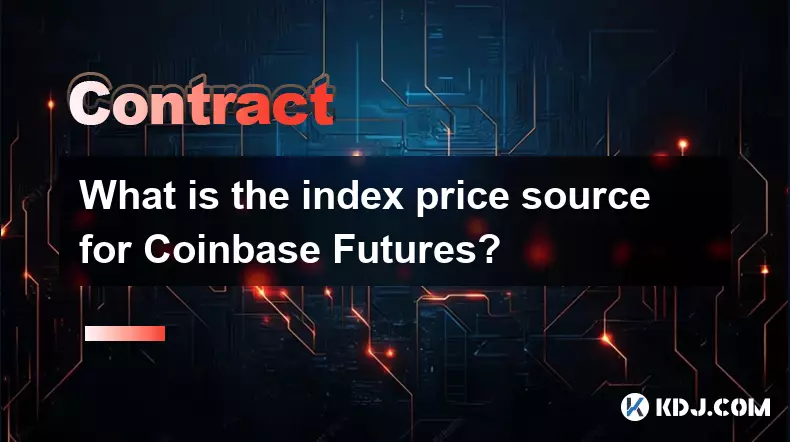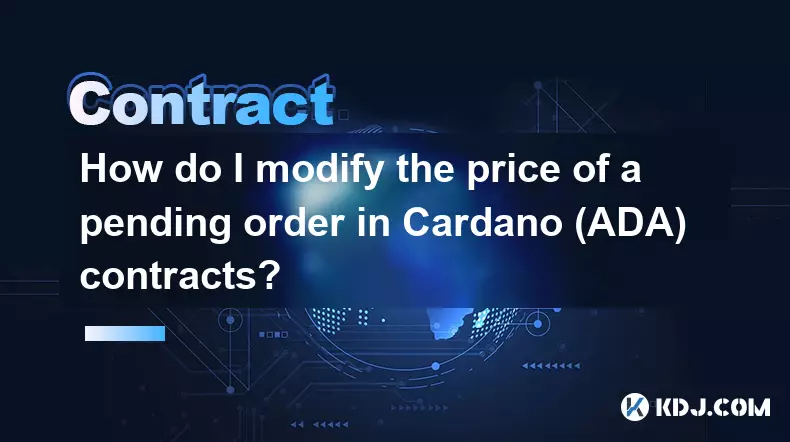-
 bitcoin
bitcoin $109523.663807 USD
-0.13% -
 ethereum
ethereum $4019.526508 USD
2.06% -
 tether
tether $1.000482 USD
0.00% -
 xrp
xrp $2.776815 USD
0.18% -
 bnb
bnb $958.942396 USD
0.12% -
 solana
solana $204.294698 USD
3.84% -
 usd-coin
usd-coin $0.999693 USD
0.00% -
 dogecoin
dogecoin $0.232115 USD
2.09% -
 tron
tron $0.338028 USD
0.84% -
 cardano
cardano $0.790920 USD
1.50% -
 hyperliquid
hyperliquid $44.871443 USD
5.60% -
 ethena-usde
ethena-usde $1.000322 USD
0.04% -
 chainlink
chainlink $21.034165 USD
2.60% -
 avalanche
avalanche $28.794831 USD
-0.54% -
 stellar
stellar $0.360466 USD
1.24%
What is the index price source for Coinbase Futures?
Coinbase Futures uses a weighted, multi-source index price to ensure fair, manipulation-resistant valuations and stable risk management across derivatives.
Sep 22, 2025 at 09:18 am

Understanding Index Price in Coinbase Futures
1. The index price on Coinbase Futures serves as a reference rate to prevent manipulation and ensure fair valuation across derivative contracts. It is not derived from the last traded price on the exchange but instead aggregates data from multiple trusted sources. This approach minimizes volatility spikes caused by isolated trades or flash crashes.
2. One of the primary functions of the index price is to calculate mark prices for futures contracts. The mark price determines unrealized profit and loss for open positions and plays a crucial role during liquidation events. By using an index rather than a single exchange’s spot price, Coinbase reduces the risk of price manipulation affecting margin calls.
3. The index composition includes real-time spot prices from several major cryptocurrency exchanges. These exchanges are selected based on liquidity, reliability, and regulatory compliance. Data feeds are continuously monitored to ensure accuracy and timeliness, with algorithms filtering out outliers or anomalies.
4. Weighted averages are applied to the contributing exchange rates based on trading volume and market depth. This weighting mechanism ensures that exchanges with higher liquidity have a proportionally greater influence on the final index value, enhancing representativeness.
5. Transparency is maintained through public documentation outlining which exchanges contribute to the index at any given time. Coinbase periodically reviews these sources and may update them to reflect changes in market conditions or exchange performance without compromising stability.
Data Sources Behind the Index Calculation
1. Key contributors to the index price typically include top-tier exchanges such as Binance, Kraken, Bitstamp, and Gemini. These platforms provide consistent API access to spot market data, enabling seamless integration into Coinbase’s pricing engine.
2. Each source undergoes rigorous evaluation before inclusion. Criteria involve uptime reliability, historical data consistency, anti-spoofing measures, and resistance to wash trading. Only exchanges meeting strict standards are eligible for participation.
3. Real-time bid and ask quotes, along with last traded prices, are pulled from each source at frequent intervals—often every few seconds. This high-frequency sampling allows the index to remain responsive to genuine market movements while smoothing out transient noise.
4. A median-based filtering technique is often used to eliminate extreme values that could distort the average. For example, if one exchange reports a sudden 10% deviation due to a technical glitch, it will be excluded from the calculation until verified.
5. The aggregated data is timestamped and logged for audit purposes. This creates an immutable record that supports dispute resolution and regulatory scrutiny, reinforcing trust in the integrity of the futures market.
Role of Index Price in Risk Management
1. During periods of high volatility, the index price acts as a stabilizing factor by preventing rapid-fire liquidations driven by temporary imbalances on a single exchange. This protects traders from unfair margin losses due to manipulated or erroneous prints.
2. Funding rates in perpetual futures contracts are also tied to the index price. Discrepancies between contract price and index trigger adjustments that align long and short incentives, maintaining equilibrium in open interest.
3. Clearing houses and margin systems rely heavily on accurate index values to assess collateral requirements. An unreliable index could lead to under-collateralization or unnecessary forced closures, both of which undermine market confidence.
4. In cross-margin accounts, the index helps evaluate portfolio health by providing a unified benchmark against which all positions are measured. This enables more efficient use of capital across multiple instruments.
5. Coinbase explicitly states that its index methodology prioritizes resilience over speed, favoring stable, verified data streams even if slightly delayed, ensuring robustness during critical market events.
Frequently Asked Questions
How often is the index price updated?The index price is refreshed every few seconds using the latest available data from integrated exchanges. Updates occur continuously during active trading sessions to reflect current market conditions accurately.
Can the index price differ significantly from the spot price on Coinbase Pro?Yes, minor deviations can occur due to differences in calculation methods. The index reflects a global average, whereas Coinbase Pro’s spot price represents trades executed solely on that platform.
What happens if one of the index sources goes offline?The system automatically detects downtime and excludes the affected feed from calculations. The remaining sources continue to support the index, preserving functionality without interruption.
Are leverage tokens or options priced using the same index?Leveraged products offered on Coinbase Derivatives use the same underlying index structure to maintain consistency across product lines, ensuring uniformity in valuation and risk exposure metrics.
Disclaimer:info@kdj.com
The information provided is not trading advice. kdj.com does not assume any responsibility for any investments made based on the information provided in this article. Cryptocurrencies are highly volatile and it is highly recommended that you invest with caution after thorough research!
If you believe that the content used on this website infringes your copyright, please contact us immediately (info@kdj.com) and we will delete it promptly.
- Ethereum Price Crash Concerns: Navigating the Volatility
- 2025-09-27 16:45:11
- Bitcoin's Bull Flag and FVG: Decoding the Crypto Crystal Ball
- 2025-09-27 16:25:14
- Ozak AI's $OZ Token: Riding the AI & Blockchain Profit Surge
- 2025-09-27 16:25:14
- Remittix Token Presale: CertiK Verification and PayFi Innovation
- 2025-09-27 16:30:00
- XRP Chart Signal Sparks Price Rally Buzz: Is a Breakout Imminent?
- 2025-09-27 16:45:11
- Vitalik, Chat Control, and Privacy Security: A Balancing Act
- 2025-09-27 16:30:00
Related knowledge

How do I enable the "scalping-only" mode for Cardano (ADA) contracts?
Sep 24,2025 at 03:19am
Understanding Scalping Strategies in Crypto Derivatives1. Scalping in cryptocurrency trading refers to executing multiple short-term trades within min...

What is the maximum position limit for Cardano (ADA) contracts?
Sep 23,2025 at 11:00pm
Understanding ADA Futures and Derivatives Market Structure1. Cardano (ADA) futures contracts are offered by several major cryptocurrency derivatives e...

What is the maker fee for Cardano (ADA) contracts?
Sep 26,2025 at 09:01am
Understanding Maker Fees in Cardano (ADA) Contracts1. The concept of maker fees applies broadly across decentralized exchanges and smart contract plat...

How can I view open interest in Cardano (ADA) contracts?
Sep 24,2025 at 07:36am
Understanding Open Interest in Cardano Derivatives1. Open interest refers to the total number of outstanding derivative contracts, such as futures or ...

How do I modify the price of a pending order in Cardano (ADA) contracts?
Sep 27,2025 at 01:00am
Understanding Pending Orders in Cardano Smart Contracts1. Cardano operates on a proof-of-stake blockchain that supports smart contracts through its Pl...

What is the function of the insurance fund in Cardano (ADA) contracts?
Sep 24,2025 at 02:18am
Understanding the Role of Insurance Funds in Cardano Smart Contracts1. The insurance fund within Cardano's ecosystem is not a native feature directly ...

How do I enable the "scalping-only" mode for Cardano (ADA) contracts?
Sep 24,2025 at 03:19am
Understanding Scalping Strategies in Crypto Derivatives1. Scalping in cryptocurrency trading refers to executing multiple short-term trades within min...

What is the maximum position limit for Cardano (ADA) contracts?
Sep 23,2025 at 11:00pm
Understanding ADA Futures and Derivatives Market Structure1. Cardano (ADA) futures contracts are offered by several major cryptocurrency derivatives e...

What is the maker fee for Cardano (ADA) contracts?
Sep 26,2025 at 09:01am
Understanding Maker Fees in Cardano (ADA) Contracts1. The concept of maker fees applies broadly across decentralized exchanges and smart contract plat...

How can I view open interest in Cardano (ADA) contracts?
Sep 24,2025 at 07:36am
Understanding Open Interest in Cardano Derivatives1. Open interest refers to the total number of outstanding derivative contracts, such as futures or ...

How do I modify the price of a pending order in Cardano (ADA) contracts?
Sep 27,2025 at 01:00am
Understanding Pending Orders in Cardano Smart Contracts1. Cardano operates on a proof-of-stake blockchain that supports smart contracts through its Pl...

What is the function of the insurance fund in Cardano (ADA) contracts?
Sep 24,2025 at 02:18am
Understanding the Role of Insurance Funds in Cardano Smart Contracts1. The insurance fund within Cardano's ecosystem is not a native feature directly ...
See all articles










































































